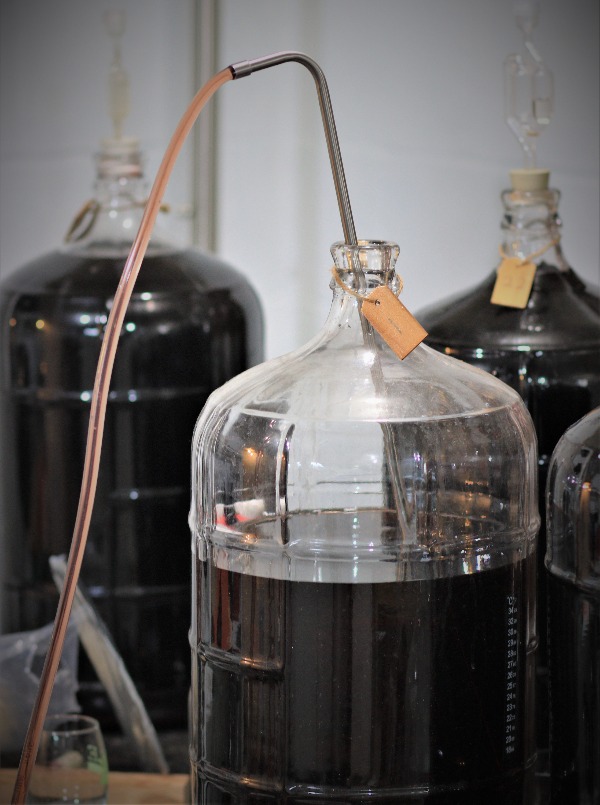How Often Should You Rack Your Wine? (Smart Winemaking)

Racking is simply the process of transferring a wine from one container to another while leaving behind any sediment or “lees”. Why do you rack your wine? Over time fruit particles and dead yeast cells will settle out of the wine and pile up on the bottom of your container. In the first days after pressing a wine, this layer will be very thick and particularly troublesome. This thick layer of yeast and fruit crud is referred to as the gross lees, whereas the thinner sediment later on is known as the fine lees.
The main purpose of racking is to separate the clean wine from these decaying lees to eventually form a crystal clear and ready-to-bottle wine… but the question is… How often should you rack your wine?
No crazy equipment needed here. A simple 3/8 inch stainless steel racking cane and some 5/16 inch food grade tubing are my go-to racking equipment. A 5/16″ tube will stretch over the 3/8 cane nicely with virtually no risk of falling off or leaking on you. The stainless racking cane will last longer than you and the tubing can be replaced with very little cost. This size is good enough to handle most home winemaking transfers and will go a little faster than the plastic canes due to the thin walls and larger inside diameter. I have a 1/2 inch racking cane, but it is generally a little too aggressive and can really disturb the lees during a racking. Larger canes can be used for larger transfers like barrel to barrel.
Racking Equipment
Leaving the wine on a stagnant, thick layer of lees for too long can cause some serious problems with the wine. A pile of angry, unfed yeast cells will generally start creating hydrogen sulfide (rotten egg smell), which can morph into the dreaded organosulfur compound, mercaptan (burnt rubber taste). Any leftover nutrients that may have fallen out of the wine after fermentation can also feed unfriendly bacteria and yeasts. These are obviously not good things…
* Occasionally, some long term lees contact is welcome but on fine lees, not the gross lees. This means, you still need to rack after pressing the wine. If making a kit, you can wait quite a while to rack since you really won’t have much for gross lees. The process of stirring the lees (aka Bâtonnage) is commonly used when making wines like Chardonnay and can create a bit more mouth feel.

